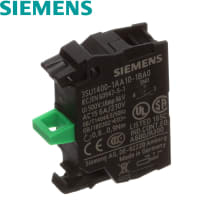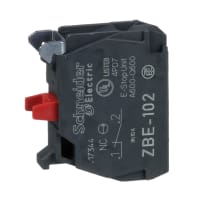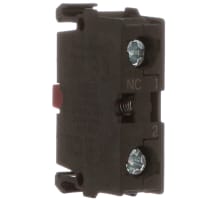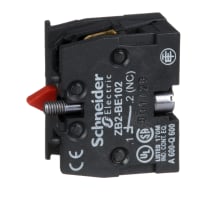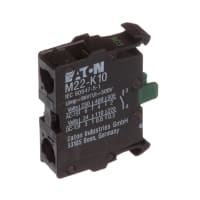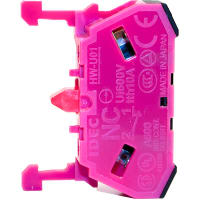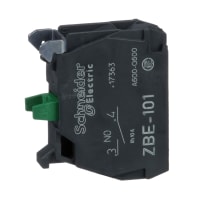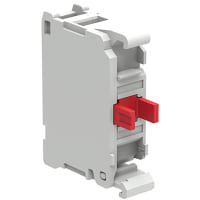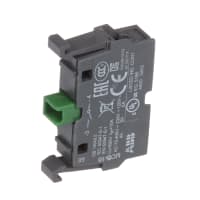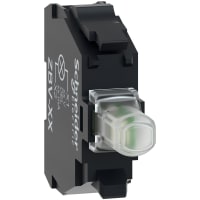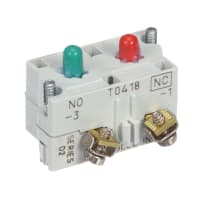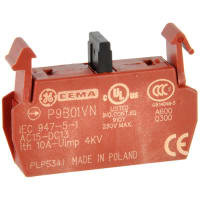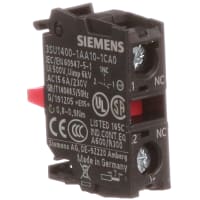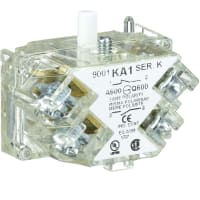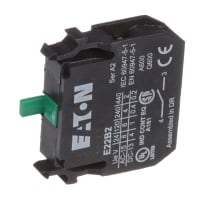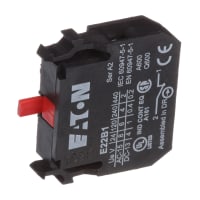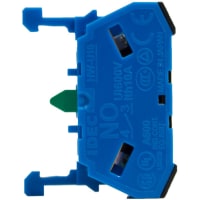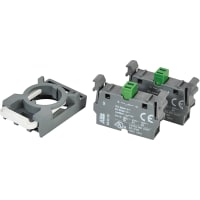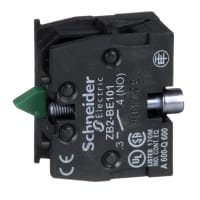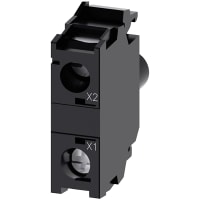Contact Blocks
At RS, we offer a comprehensive selection of contact blocks designed for reliable and efficient switching applications in industrial and engineering environments. Whether you're looking for a specific switch contact type, voltage rating, or contact block electrical configuration, our extensive catalogue provides the right solution to meet your technical requirements.
We partner with leading manufacturers, such as Omron Automation and Schneider Electric, to ensure every contact block meets the highest standards of reliability and functionality.
With our advanced filtering options, you can easily narrow your search by manufacturer, series, voltage rating, and more, enabling you to find the perfect fit for your system.
Need assistance selecting the right contact block? Contact us today for expert support and detailed technical specifications.
What is a contact block?
Contact blocks are key components in many electrical devices and systems. They establish connections between circuits and control devices such as switches, buttons, relays, and circuit breakers.
When activated, the contact block makes or breaks the circuit to allow or stop current flow. For example, in a push button, the contact block completes the circuit when pressed and breaks it when released.
Each contact terminal block is built to maximize conductivity while insulating and protecting internal components. Contact materials typically include copper, silver, or silver alloys, housed in durable plastic or rubber casings.
Their modular design allows one button to perform multiple actions. Most importantly, they provide a critical layer of safety by allowing a low-voltage signal to control high-power equipment, protecting both operators and machinery.
What types of contact blocks are there?
While there are many variations, contact blocks are primarily categorized by their default electrical state and physical contact arrangement. Understanding these key differences will help you select the perfect component for your application. Here are the main types:
Normally open (NO) vs. normally closed (NC)
This is the most fundamental characteristic of a contact block, defining its function in a circuit before it's activated.
- Normally open (NO): In its resting state, an NO block maintains an open circuit – think of it as a drawbridge that is up. No current can flow. Activating the operator (e.g. pressing the button) closes the contacts, allowing the circuit to be completed. This makes it the standard choice for 'start' functions and applications where you want to initiate an action.
- Normally Closed (NC): An NC block does the opposite. In its resting state, it maintains a closed circuit, allowing current to flow continuously. Activating the operator opens the contacts and breaks the circuit. This 'fail-safe' nature makes it essential for emergency stop buttons and safety circuits.
Single vs. double contact block
This refers to how many contact pairs are used to open or close the circuit managed by the contact block.
- Single contact blocks: A single block contains one set of contacts (either NO or NC) that controls a single electrical circuit. They are the straightforward choice for simple applications, like energizing a single indicator light or sending one signal to a PLC.
- Double contact blocks: A double block uses two sets of contacts in series, which generally results in faster responses while offering greater load capacity for more complex systems. Its less simplistic nature does make it slightly more vulnerable to fluctuation in reliability after long-term use, however.
Momentary vs. maintained action
How long does the contact block stay active when pressed? That's what its 'action' means in this context—although in truth the action is a function of the push button or switch operator, not the contact block itself, which simply follows the operator's lead.
- Momentary action: A momentary operator (like a standard push button for a horn or a machine 'jog' control) is spring-loaded. The contact block only changes state while the button is actively held down. As soon as you release it, the operator and the contact block return to their original positions.
- Maintained action: A maintained operator (like a latching E-stop button or a two-position selector switch) stays in its new position after being activated. The contact block will remain in its changed state until the operator is manually reset (e.g. by twisting to release the E-stop or turning the switch back).
Common applications of contact blocks
You'll find contact blocks at the heart of most industrial control systems, where they are trusted to reliably translate manual actions into electrical signals. Because they are engineered for durability and safety, they are essential in devices such as:
- Switches and buttons: Including push buttons, toggle switches, and slide switches. In these devices, the contact block is the component that does the real work. It is mounted directly behind the operator, which you press or flip, providing the dependable contact block electrical connection needed to start or stop a machine, signal a PLC, or activate a process on the factory floor.
- Relays: These allow one circuit to control another, using contact blocks to complete the connection. More specifically, a push button's contact block is typically used to send a low-voltage signal that energizes the coil of a relay or contactor. The relay then uses its own set of internal, higher-power contacts to safely switch the main electrical load, such as a motor or heater.
- Circuit breakers: These use contact blocks to stop current flow and prevent damage during overloads or short circuits. This might also be said to refer to auxiliary contact blocks that can be added to industrial-grade circuit breakers.
Why buy contact blocks from RS?
We offer high-quality contact blocks for all industry applications. We're proud to be ECIA, CTPAT, and NAED certified, so you can shop with confidence.
Orders received before 10 pm ET (Monday to Friday) are dispatched the same day from our advanced distribution center in Fort Worth, Texas. If needed, our returns policy offers added reassurance.
Need help with your contact block order? Contact our expert team or visit the Expert Hub for technical articles and insights.

